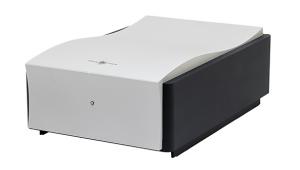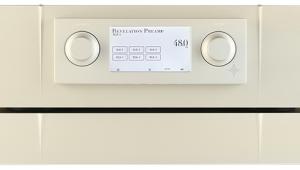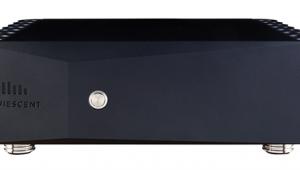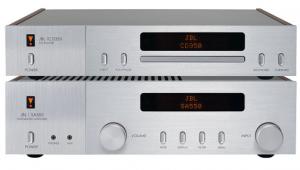Musical Fidelity The Preamp/Dr Thomas (Vintage)

In Tony Michaelson’s company started with one diminutive but memorable product, called simply ‘The Preamp’. He started by making them on his kitchen table… What made the product so eyecatching was the acrylic front, with the product name illuminated in red.
In its original form, The Preamp had an appeal all of its own. It was so tiny, so simple, yet so businesslike. Its pleasing, instrumentation-style toggle switches gave you On/Off and select between Phono and Tuner inputs and between Monitor and Source for the tape loop. There were no ‘spare’ line inputs or CD input, as the preamp dates from 1982.
Moving-magnet and moving-coil input options were provided on separate sockets, but to change from one to the other you had to remove the cover to access two small switches inside.
Naturally, The Preamp needed a matching power amplifier, and this was named after its designer, Dr Martin Vincent Thomas. In its original shoebox format, with illuminated name on the fascia, the 100W+ Dr Thomas power amplifier made a nice visual match for The Preamp and it was surprisingly powerful. But this casework design was dropped quite quickly. And when we began listening, we found the Dr Thomas input sockets too close together to accept bulkier modern phono plugs. And there was no gold plating.
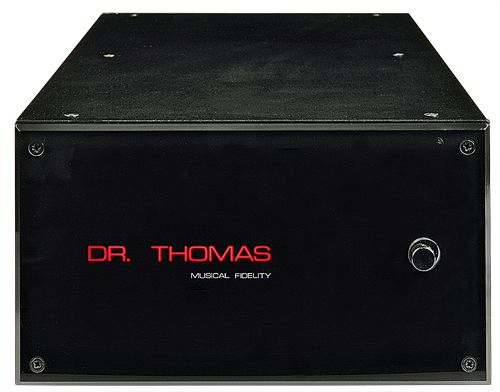
The preamp scores
Hooking things up you do have to take a little more care than with today’s well-protected equipment, making sure for example you turn The Preamp on first. Otherwise, you’ll get a nasty bang through the speakers. Hi-fi without a safety net!
With the redoubtable Rebecca Pidgeon and The Raven [Chesky SACD 329] vocals had a bright, yet still trippingly-youthful quality. Bass was good, firm and well-proportioned, the string-bass giving effective movement to the gently-rocking rhythm. Playing through the album, the Preamp/Dr T combination seemed happily able to display the way those cunningly-wrought arrangements convey such varied moods, especially the wintry landscape that’s evoked in the atmospheric title track.
There was clarity and precision, while the piano had a crystalline quality stopping short of unpleasant hardness. Substituting
a Classé amp gave a clearer view of the abilities of the Preamp itself. Now the sound opened out, with a deeper,
free-breathing bass, a more expansive stereo image with something more like real space around the instruments, and
much better low-level detail.
With the MC input, on Argo’s The World Of The Academy (of St Martin-in-the-Fields) and Handel’s ‘Entry Of The Queen Of Sheba’, it was almost too much, as the ASMIF’s famously bright and effervescent string sound glowed a little too fiercely with the Preamp/Dr Thomas combination.
But with The Preamp feeding a modern solid-state design the merits of this little box shone through more clearly. This time the music glistened, but now without sounding too bright. There was also a good feeling of overall balance with a powerful, well-articulated bass which did a lot for the flow of the music as well as helping to make the recorded acoustic sound convincing as well as impressive.
Verdict
These early Musical Fidelity products, and especially The Preamp, can still make music very well. But, says Antony, 'There aren’t any more Dr T output transistors left, which has been the case since 1989. But all the other electronic parts are standard. The same applies to The Preamp. But, be warned, these are well past their design life and disturbing anything can have unforeseen results.'
Originally published in the 2013 Yearbook






